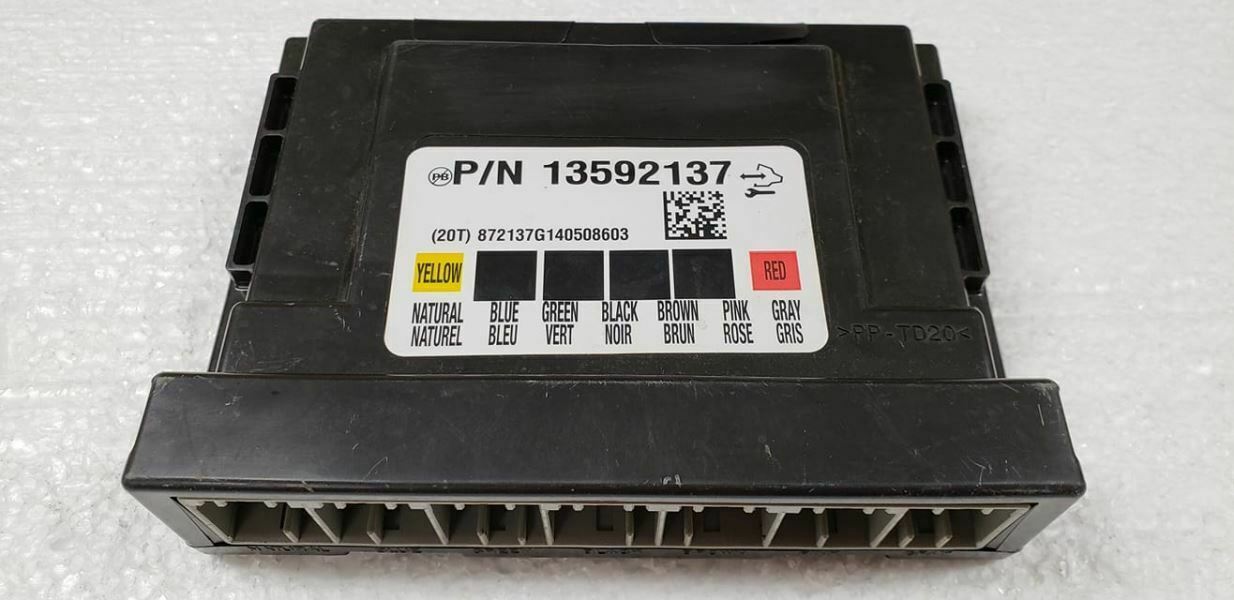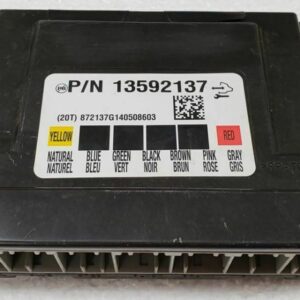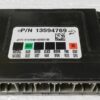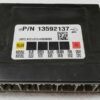Restore Your Truck’s Functionality and End Electrical Frustrations
Are you dealing with bizarre electrical issues in your 2015 Silverado or other GM vehicle? Flickering lights, malfunctioning windows, a security system that acts up, or even a no-start condition can all point to one culprit: a failing Body Control Module (BCM). As the central hub for your vehicle’s body electronics, a faulty BCM can cause a cascade of frustrating and seemingly unrelated problems. In my 20+ years of diagnostics, I’ve seen how a bad BCM can make a perfectly good truck feel unreliable. The good news is, you don’t need an expensive trip to the dealership for a complex and costly repair.
This is your direct, plug-and-play solution. We provide a fully tested, replacement BCM that is professionally programmed with the data from your vehicle’s original module. This cloning service means you can skip the hassle and expense of dealer-level programming tools. You simply send us your original BCM, we transfer all the critical vehicle-specific information to the replacement unit, and ship it right back to you, ready for installation. It’s the most efficient way to get your truck back to 100% without the dealership headache.
From the Diagnostic Bay: The Case of the Haunted Sierra
A customer brought in a 2015 GMC Sierra 1500 with a laundry list of complaints: the dome lights would flicker randomly, the radio would shut off, and occasionally, it wouldn’t crank. He’d already replaced the battery and checked the main grounds. A scan showed intermittent communication loss codes (U0140) with the BCM. Instead of quoting him over a thousand dollars for a new module and hours of programming at the dealer, we recommended this cloning service. We pulled his BCM, sent it out, and had the programmed replacement back in two days. The total install time was under 30 minutes. The truck fired right up, and all the electrical gremlins were gone. It’s a prime example of how the right part and service can save both time and money, turning a major diagnostic headache into a straightforward fix.
Is Your GM Vehicle Showing These Symptoms?
- ✔ Erratic or non-functional interior/exterior lights.
- ✔ Power windows, locks, or mirrors working intermittently or not at all.
- ✔ Vehicle security system faults or alarm sounding randomly.
- ✔ Instrument cluster warnings or gauges behaving strangely.
- ✔ Intermittent no-start or no-crank conditions.
- ✔ Diagnostic trouble codes (DTCs) related to communication loss, such as U0140, U0155, or other U-codes.
- ✔ Malfunctioning keyless entry or remote start.
A Straightforward Guide to Your BCM Installation
- ✔ Safety First: Always disconnect the negative terminal from your vehicle’s battery before starting any electrical work.
- ✔ Locate the BCM: On most 2015 Silverado and Sierra models, the BCM is located under the driver’s side of the dashboard, near the steering column. For other models, it may be on the firewall or behind a kick panel. Consult a service manual if you’re unsure.
- ✔ Remove the Old Module: Carefully disconnect the electrical connectors. They have locking tabs that must be depressed to be released. Once disconnected, unbolt or unclip the module from its mounting bracket.
- ✔ Install the New Module: Mount your newly programmed BCM in the same location and securely reconnect all electrical connectors. You should hear a ‘click’ as they lock into place.
- ✔ Reconnect the Battery: Reattach the negative battery terminal.
- ✔ Perform Post-Install Checks: Start the vehicle and verify that all body functions (lights, windows, locks, etc.) are working correctly. Please see the note below regarding potential relearn procedures.
Important Post-Installation Information
While our programming makes this a plug-and-play repair, some vehicle systems may require a quick sync or relearn procedure after the BCM is replaced. This is normal. Key procedures include:
- Airbag System Sync: If your airbag warning light is on after installation, a ‘Setup SDM Primary Key in BCM’ procedure must be performed with a professional scan tool to sync the systems.
- Brake Pedal Position Relearn: On some models, a brake pedal position sensor relearn may be needed to ensure correct brake light and traction control operation.
Disclaimer: Always refer to a factory service manual for your specific vehicle or consult with a qualified automotive technician for detailed procedures.
Will This Fit My Vehicle?
This BCM is a direct replacement for part numbers 13592137, 13506935, 13506936, 13587704, and 13594764 and is guaranteed to fit the following models:
- ATS: 2015-2016
- Corvette: 2015
- CTS: 2015-2016
- Escalade / Escalade ESV: 2015
- Impala: 2015-2016 (New Style)
- Sierra 1500 / 2500 / 3500 & Denali Models: 2015
- Silverado 1500 / 2500 / 3500: 2015
- Sonic: 2015-2018
- Suburban 1500: 2015
- Tahoe: 2015
- XTS: 2015
- Yukon / Yukon XL 1500: 2015
Frequently Asked Questions About Our BCM Service
Frequently Asked Questions
How does the programming service work?
It’s simple. After you purchase, we will contact you with instructions to ship your original BCM to us. Once we receive it, we extract the vehicle-specific data and flash it onto the replacement module. We then ship the plug-and-play replacement back to you, typically within one business day.
Does this module come programmed to my VIN?
Yes, it comes programmed with all the necessary data from your original module, including the VIN, mileage, and vehicle options. This is what makes it a true plug-and-play solution.
Do I need to return my old BCM as a core?
No core charge! We only need your original module to perform the data transfer service. You are welcome to keep it afterward.
What tools are needed for installation?
Basic hand tools like a socket set and screwdrivers are usually all that’s required for the physical installation. In some cases, as noted above, a professional scan tool may be needed for post-install relearn procedures like the airbag system sync.
Is this a reliable fix for my 2015 Silverado BCM issues?
Absolutely. By using a quality replacement module and cloning your vehicle’s original data, you are restoring the BCM to its proper factory operation, effectively resolving the electrical issues caused by the failing unit.



